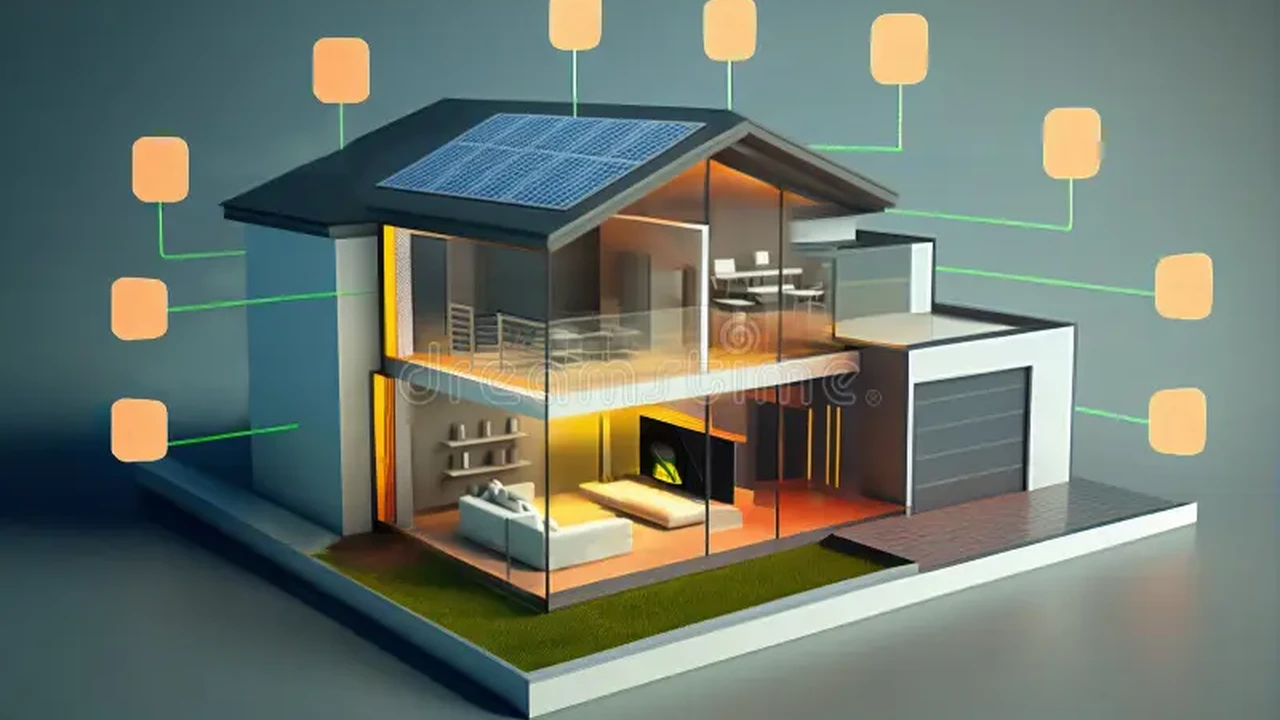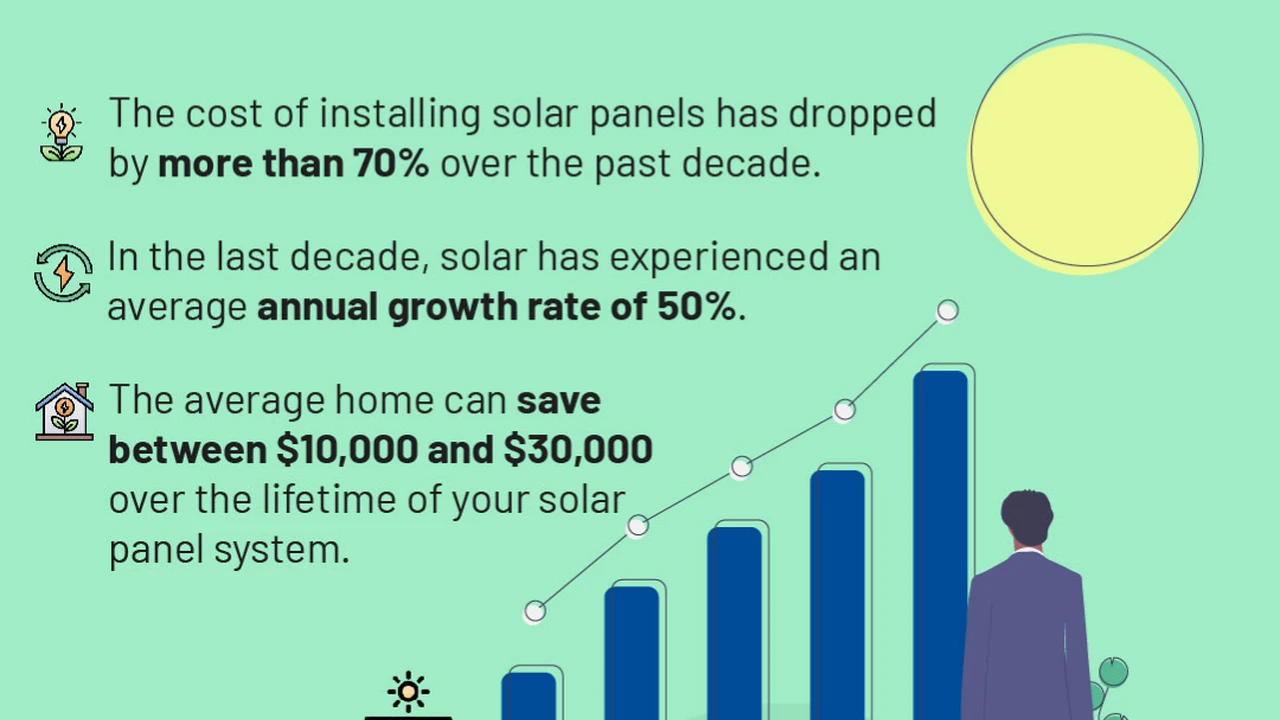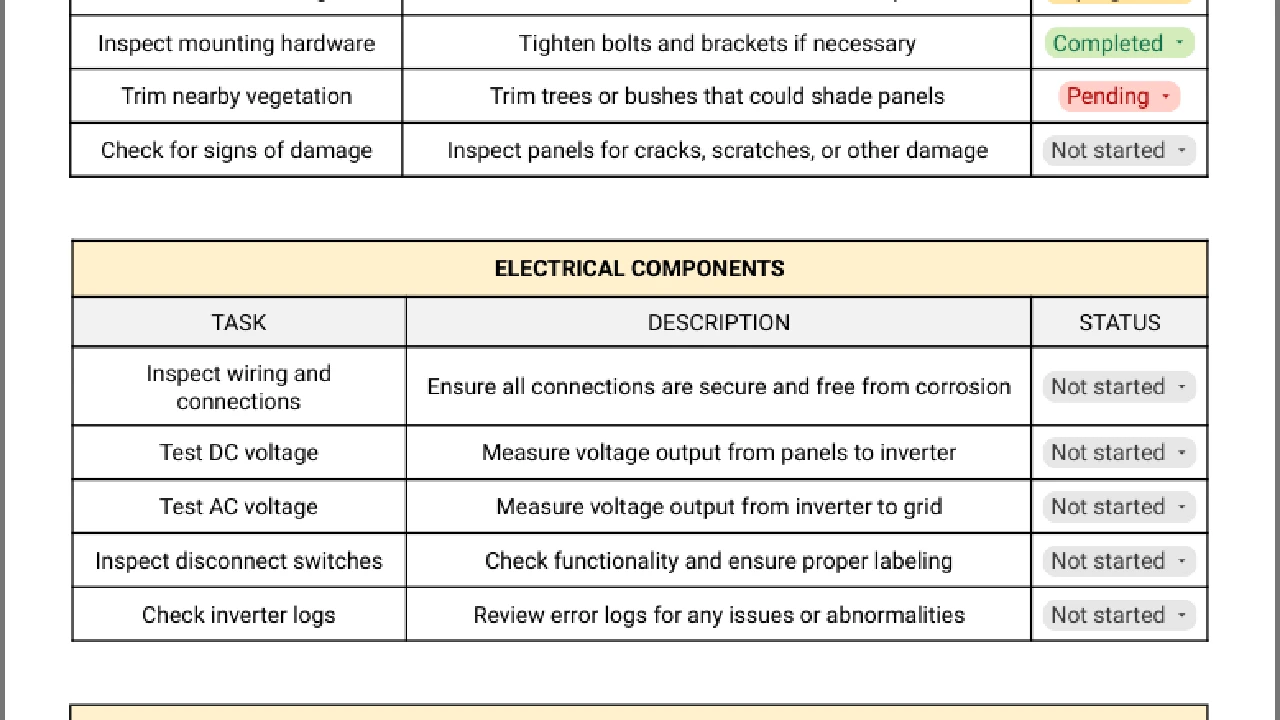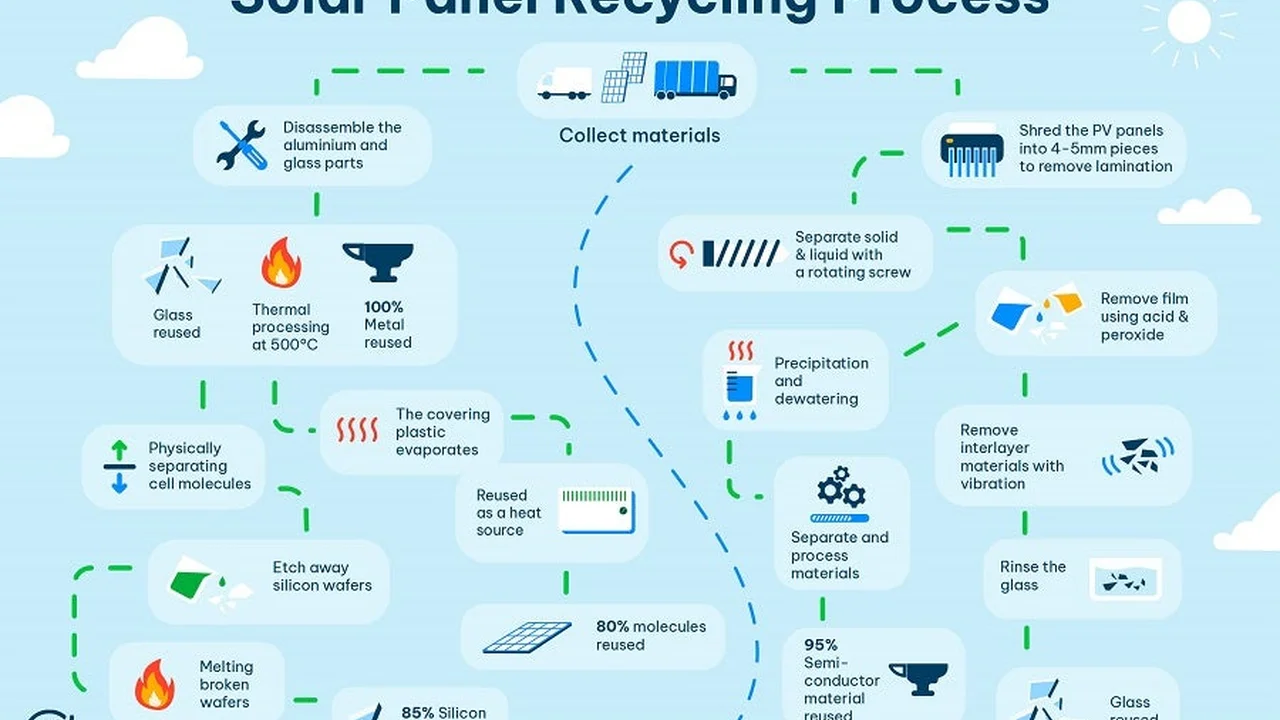Solar Panel and Smart Home Technology: Maximizing Efficiency

Understanding the Synergy Solar Panels and Smart Home Integration
Alright, let's dive into how solar panels and smart home tech can team up to seriously boost your energy efficiency. Think of it as peanut butter and jelly, Batman and Robin – they're good on their own, but together, they're unstoppable. We're talking about getting the most bang for your buck, saving money, and being kinder to the planet. Sounds good, right?
The basic idea is this: solar panels generate electricity, and smart home devices help you use that electricity more intelligently. Instead of just blindly powering your home, you can control and optimize energy consumption based on real-time conditions and your specific needs. This means less wasted energy, lower bills, and a smaller carbon footprint. It’s a win-win-win!
Smart Thermostats Optimizing Solar Energy Usage
One of the biggest energy hogs in most homes is heating and cooling. Smart thermostats like the Nest Learning Thermostat, Ecobee SmartThermostat, and Honeywell Home T9 Smart Thermostat can learn your habits and adjust the temperature accordingly. But here's where the solar magic comes in. These thermostats can be integrated with your solar panel system to prioritize using solar energy when it's available. For example, on a sunny day, the thermostat can pre-cool your house in the morning, taking advantage of the peak solar production. Then, as the sun goes down, it can gradually raise the temperature, reducing your reliance on grid electricity.
Product Recommendations:
- Nest Learning Thermostat (Gen 3): A classic for a reason. It learns your schedule quickly and has a sleek design. Around $250. Great for those who want a simple, automated experience.
- Ecobee SmartThermostat with Voice Control: Offers more advanced features like room sensors to optimize temperature in different areas of your home. Also integrates with voice assistants like Alexa and Google Assistant. Around $250. Ideal for larger homes with varying temperature needs.
- Honeywell Home T9 Smart Thermostat: Uses smart room sensors to focus on the rooms that matter most and offers customizable scheduling. Around $200. The best option for targeting specific rooms for heating and cooling.
Comparison: The Nest focuses on ease of use and learning your habits, while the Ecobee provides more granular control and room-specific optimization. The Honeywell offers a balance of features and affordability, with a focus on targeted room control. Consider your home size, desired level of control, and budget when choosing.
Smart Lighting Systems and Solar Powered Efficiency
Smart lighting isn't just about changing colors and dimming lights from your phone (though that's cool too!). It's about automating your lighting based on occupancy, time of day, and even the amount of natural light available. Combine this with solar panels, and you've got a recipe for serious energy savings. Imagine lights automatically dimming when the sun is shining brightly or turning off completely in empty rooms. That's the power of smart lighting and solar!
Product Recommendations:
- Philips Hue: The most popular smart lighting system, offering a wide range of bulbs, lamps, and accessories. Requires a Hue Bridge. Bulbs start around $15. Best for versatility and a wide range of options.
- LIFX: A direct competitor to Philips Hue, offering similar features but without the need for a hub in some cases. Bulbs start around $20. Good for those who want vibrant colors and don't want to use a hub.
- Wyze Bulb Color: A more affordable option that still offers color changing and dimming capabilities. Works with Wi-Fi directly. Bulbs start around $10. Ideal for budget-conscious consumers who want a simple smart lighting setup.
Comparison: Philips Hue has the most mature ecosystem and widest range of products. LIFX offers vibrant colors and doesn't always require a hub. Wyze is the most affordable option but may lack some of the advanced features of the other two. Consider your budget, desired features, and existing smart home ecosystem when choosing.
Smart Appliances and Solar Energy Maximization
Smart appliances, like refrigerators, washing machines, and dishwashers, are becoming increasingly common. These appliances can be programmed to run during peak solar production hours, maximizing your use of renewable energy. For example, you could schedule your dishwasher to run in the middle of the day when your solar panels are generating the most electricity. Some smart appliances even have built-in energy monitoring features, allowing you to track your energy consumption and identify areas where you can save even more.
Product Recommendations:
- Samsung SmartThings Refrigerator: Offers a touchscreen display, built-in camera to see inside, and integration with the SmartThings platform. Price varies depending on model, but expect to pay upwards of $2,000. Great for those who want a feature-rich smart refrigerator.
- LG SmartThinQ Washer and Dryer: Can be controlled remotely and offer features like smart diagnosis and energy monitoring. Price varies depending on model, but expect to pay around $1,000 each. Ideal for those who want convenient remote control and energy efficiency features.
- Bosch Home Connect Dishwasher: Offers remote control, custom wash cycles, and integration with other smart home devices. Price varies depending on model, but expect to pay around $800-$1,200. Excellent for those who want a reliable and efficient smart dishwasher.
Comparison: Samsung focuses on a connected kitchen experience with its SmartThings platform. LG offers convenient remote control and energy monitoring features. Bosch is known for its reliability and performance. Consider your budget, desired features, and existing appliance ecosystem when choosing.
Energy Monitoring Systems Tracking Solar Panel Output and Consumption
To truly optimize your solar energy usage, you need to know how much energy you're generating and how much you're consuming. Energy monitoring systems, like Sense, Emporia Vue, and Neurio, provide real-time data on your energy usage, allowing you to identify energy hogs and make informed decisions about your energy consumption. These systems can also track your solar panel output, giving you a clear picture of your overall energy balance.
Product Recommendations:
- Sense Energy Monitor: Identifies individual appliances and tracks their energy usage. Around $300. Best for identifying specific energy hogs in your home.
- Emporia Vue Energy Monitor: A more affordable option that still provides detailed energy monitoring data. Around $150. Ideal for those on a budget who want to track their overall energy consumption.
- Neurio W1-HEM Home Energy Monitor: Offers real-time energy monitoring and can be integrated with smart home devices. Around $200. Excellent for integrating with other smart home devices and automating energy management.
Comparison: Sense excels at identifying individual appliances, while Emporia Vue is a more affordable option for overall energy monitoring. Neurio offers integration with smart home devices. Consider your budget and desired level of detail when choosing.
Smart Plugs Controlling Energy Usage and Integrating with Solar Power
Smart plugs are a simple and affordable way to control the energy usage of individual devices. You can use them to turn off appliances when they're not in use, schedule devices to turn on and off at specific times, and even monitor their energy consumption. Combine this with solar panels, and you can create a system that automatically turns off devices during peak solar production hours, maximizing your use of renewable energy.
Product Recommendations:
- TP-Link Kasa Smart Plug Mini: A reliable and affordable smart plug that works with Wi-Fi directly. Around $15. Best for simple on/off control of devices.
- Wemo Mini Smart Plug: Another popular smart plug with a compact design and easy setup. Around $20. Ideal for those who want a discreet smart plug.
- Amazon Smart Plug: Integrates seamlessly with Alexa and can be controlled with voice commands. Around $25. Excellent for those who use Alexa extensively.
Comparison: TP-Link Kasa is a reliable and affordable option. Wemo offers a compact design. Amazon Smart Plug integrates seamlessly with Alexa. Consider your budget and existing smart home ecosystem when choosing.
Electric Vehicle Charging Integrating with Solar Panel Systems
If you have an electric vehicle (EV), integrating your charging system with your solar panels is a no-brainer. You can charge your EV using the excess electricity generated by your solar panels, reducing your reliance on grid electricity and saving money on fuel costs. Some smart EV chargers can even be programmed to charge your EV during peak solar production hours, maximizing your use of renewable energy.
Product Recommendations:
- Tesla Wall Connector: Designed specifically for Tesla vehicles but can be used with other EVs with an adapter. Around $500. Best for Tesla owners.
- ChargePoint Home Flex: A versatile EV charger that can be installed indoors or outdoors and offers adjustable amperage settings. Around $700. Ideal for those who want a flexible and reliable EV charger.
- JuiceBox 40 Smart Electric Vehicle Charger: Offers remote control, energy monitoring, and integration with smart home devices. Around $600. Excellent for those who want a feature-rich smart EV charger.
Comparison: Tesla Wall Connector is designed for Tesla vehicles. ChargePoint Home Flex is a versatile option with adjustable amperage settings. JuiceBox offers remote control and energy monitoring. Consider your vehicle type and desired features when choosing.
Smart Irrigation Systems and Solar Powered Water Conservation
Even your lawn can benefit from the integration of solar panels and smart home technology. Smart irrigation systems, like Rachio 3 Smart Sprinkler Controller and Orbit B-hyve Smart Sprinkler Timer, use weather data and soil sensors to optimize your watering schedule, reducing water waste and saving you money. Combine this with solar panels, and you can power your irrigation system with renewable energy, further reducing your environmental impact.
Product Recommendations:
- Rachio 3 Smart Sprinkler Controller: Uses weather data to automatically adjust your watering schedule. Around $250. Best for those who want a fully automated irrigation system.
- Orbit B-hyve Smart Sprinkler Timer: A more affordable option that still offers smart watering features. Around $150. Ideal for those on a budget who want to save water.
Comparison: Rachio 3 offers more advanced features and a more intuitive interface. Orbit B-hyve is a more affordable option that still provides effective smart watering. Consider your budget and desired level of automation when choosing.
Security Systems powered by Solar Energy
Many modern security systems can be integrated and powered with solar energy. Brands like Ring and Arlo offer solar powered options for their cameras and security systems. This allows the user to have a more reliable experience while still being energy efficient.
Product Recommendations:
- Ring Solar Panel Reliable power supply for Ring security devices. Around $50. Best for users who own Ring security systems.
- Arlo Solar Panel Reliable power supply for Arlo security devices. Around $80. Ideal for users who own Arlo security systems.
Comparison: Ring is more affordable and has a more streamlined design. Arlo offers more features and better weather resistance. Consider what security system you have when making the decision.
:max_bytes(150000):strip_icc()/277019-baked-pork-chops-with-cream-of-mushroom-soup-DDMFS-beauty-4x3-BG-7505-5762b731cf30447d9cbbbbbf387beafa.jpg)






